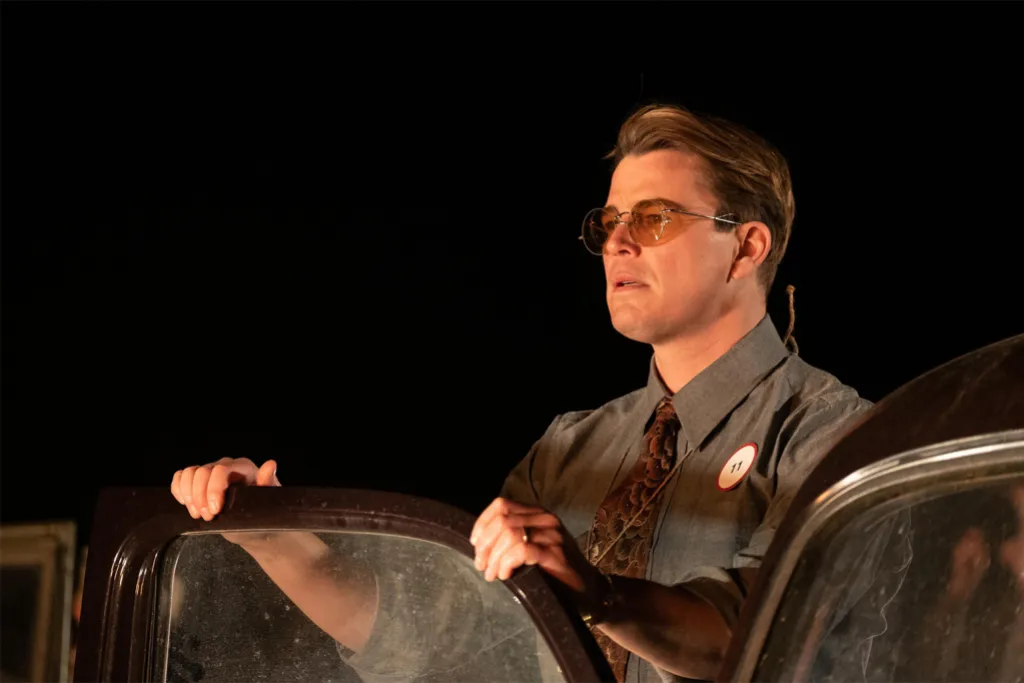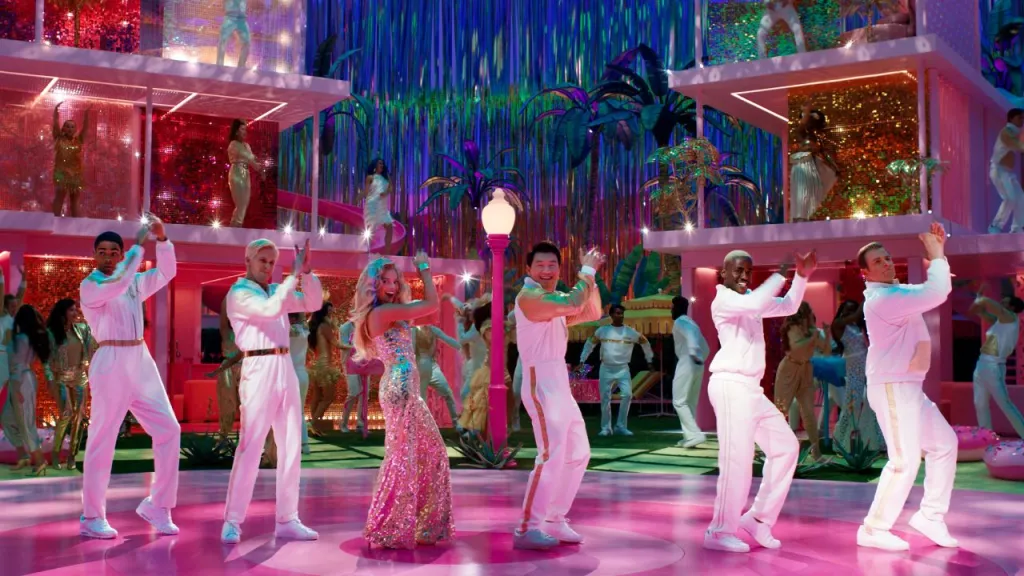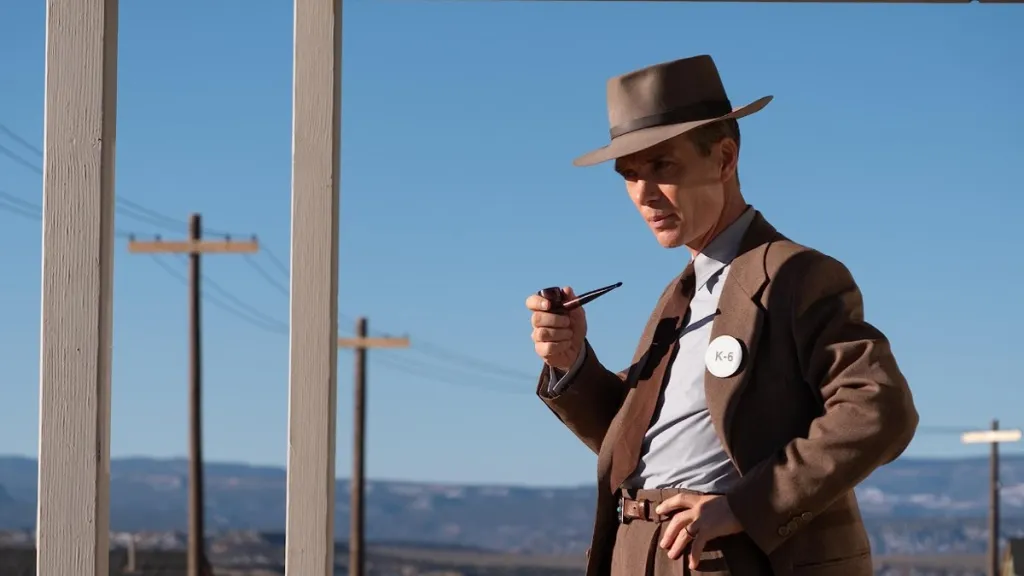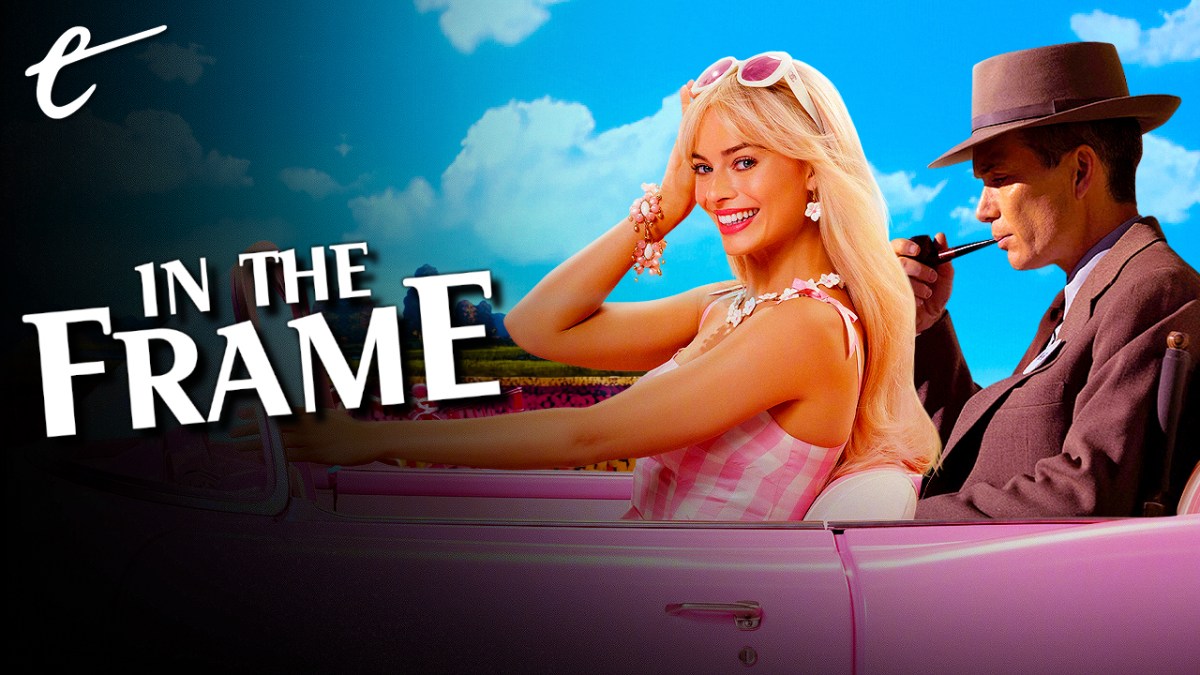This article contains spoilers for Barbie and Oppenheimer — Barbenheimer — in its discussion of the ramifications of ideas made real.
Much has been made of “Barbenheimer,” the cultural phenomenon built around the overlapping release dates of Greta Gerwig’s Barbie and Christopher Nolan’s Oppenheimer. The two films make a great double feature. More than that, they have both thrived at the box office, demonstrating that audiences will turn out for well-made and responsibly budgeted films from auteur directors with ambitious and unique perspectives.
On the surface, these two films are poles apart. Oppenheimer is a three-hour historical epic with extended portions in black and white that tells the story of J. Robert Oppenheimer, the “father of the atomic bomb.” Barbie is a candy-coated hyper-saturated self-aware comedy adventure about the eponymous doll (Margot Robbie) adventuring into the real world. These differences are part of the thrill of the double feature, the juxtaposition of mood and tempo.
However, the two films pair surprisingly well despite their different subject matter and tones. Both movies are ultimately about ideas. Specifically, both Barbie and Oppenheimer are about the relationship that exists between imagination and reality, as well as about what happens when ideas begin to manifest themselves in the corporeal world. In both cases, the results are fundamentally terrifying, although the movies reach decidedly different conclusions.
Barbie is directly about this. The first act of the movie unfolds in the imaginary “Barbieland,” which operates according to the logic of a child’s playtime. Dolls glide through the air, because that is how children play with them. It is a world where everything is prefabricated and perfect. Every day is the same and somehow the better for that. Showers run without water and glasses are always empty, even as characters drink from them.

With its knowing humor and self-aware irony, Barbie repeatedly stresses the disconnect between Barbieland and the real world. There’s a charming recurring joke in which the dolls repeatedly congratulate themselves for having solved sexism in the real world, a sly dig at the self-importance of commercialized representation. The joke works because the audience understands how disconnected Barbieland must be from the real world, where sexism still very much exists.
As Barbie develops, the boundaries between the real and fictional world begin to blur. When Barbie begins to malfunction, she has to cross over into the real world to find mother-and-daughter team Gloria (America Ferrera) and Sasha (Ariana Greenblatt). She takes Ken (Ryan Gosling) along with her. This crossover creates all sorts of problems. As the CEO of Mattel (Will Ferrell) warns his staff, it “could mean extremely weird things for our world.”
Once the boundary is crossed, there are consequences. In the real world, Ken has his first encounter with patriarchy. He likes the idea so much that he decides to export it back to Barbieland. Not only does this transform the imaginary world into a dystopia, but it also has repercussions in the real world. When Ken seizes Barbie’s Dream House and turns it into his “Mojo Dojo Casa House,” Mattel starts producing models of it — and it starts selling. The lines separating ideas and reality begin to blur, as does the logic of cause and effect.
Oppenheimer is built around a similar concept. Oppenheimer defines himself as a theoretical physicist. In Cambridge, he fumbles in his laboratory work for Patrick Blackett (James D’Arcy). In Berkeley, he separates himself from the experimental work overseen by Ernest Lawrence (Josh Hartnett). He is haunted by visions of “a hidden world,” one that exists beyond human perception. He imagines concepts like black holes, which would not be discovered in reality for decades.

Oppenheimer embraces new ideas but never commits to them. “Why limit yourself to one dogma?” he asks Jean Tatlock (Florence Pugh) as he flirts with communism and refuses to join the party. As a theoretical physicist, Oppenheimer seems to believe that he can exist in any number of states simultaneously and without any direct consequences from his choices or his ideas. Indeed, the film spends a lot of time inside his head, allowing the audience to see the world as he perceives it.
Writer Grant Morrison argued, “Before it was a Bomb, the Bomb was an Idea.” Oppenheimer suggests that it was the title character’s idea. He obsesses over the theory of it, the logic problems and the complex equations, the logistical challenges and the procedural issues. Much of Oppenheimer unfolds in meeting rooms. The title character is often drawing on blackboards. However, he quickly discovers the horror of watching that idea manifest itself in reality.
“You’re the great improviser but this, you can’t do in your head,” warns his friend Isidor Isaac Rabi (David Krumholtz). When Lilli Hornig (Olivia Thirlby) organizes scientists to protest the dropping of the bomb, Oppenheimer explains the world cannot comprehend of the bomb as an idea. “We imagine a future and our imaginings horrify us,” he tells the room. However, the politicians “won’t fear it until they understand it. And they won’t understand it until they’ve used it.” The idea must be made real.
Oppenheimer and Barbie are hardly the only recent major releases about the relationship between imagined worlds and lived reality. Wes Anderson’s recent Asteroid City is all about the relationship between artist, audience, and creation. Guardians of the Galaxy Vol. 3 is about the idea of ownership and control of intellectual property. The Spider-Verse films are explicitly about what makes a character “Spider-Man” and what makes a Spider-Man story.

In some ways, this is just a reflection of the broader cultural trend towards what might be described as “metamodernism,” in which narratives are constructed in increasingly self-aware ways, often by not only telling stories designed to appeal to genre-savvy audiences but being about the stories that they tell. It’s nothing particularly new. Barbie is an obvious descendant of The Lego Movie, while Oppenheimer fits comfortably within the themes present in the larger body of Christopher Nolan’s work.
Still, there’s a specificity to how Oppenheimer and Barbie approach this question of the relationship between idea and reality that ties the two together. Indeed, both take their themes to a logical extreme. If both Barbie and Oppenheimer are movies about creation, then it’s fitting that both can also be read as movies about parenting. After all, what is parenting but the most literal sort of manifesting something new into the world?
Throughout Oppenheimer, the sound mix emphasizes the character’s neglected children. They are rarely in focus, often just out of shot, but they are constantly crying for attention that neither Robert nor Kitty (Emily Blunt) can give them. When Kitty receives the call telling her that the test went to plan, her children are screaming in the background. When Robert imagines the effect of a nuclear blast, the camera focuses on an extra played by Christopher Nolan’s daughter, Flora.
Nolan’s movies are often about parents — specifically fathers — who neglect their children for their work. Oppenheimer is repeatedly identified as the father of the atomic bomb but neglects his own children. At one point, unable to cope with the screaming, he drops his crying son off with family friend Haakon Chevalier (Jefferson Hall), admitting that he and Kitty are “selfish, awful people.” Paradoxically, Oppenheimer’s creation of the bomb threatens the world that his children will inherit.

Barbie is similarly preoccupied with parenthood. The central human dynamic is between a mother and a daughter. Barbie’s creator, Ruth Handler (Rhea Perlman), admits she named Barbie for her own daughter, Barbara Handler. The film includes the famously discontinued toy, Barbie’s pregnant friend Midge (Emerald Fennell). When Barbie becomes human, the film ends with a joke about how she now has a fully functioning reproductive system.
In this sense, both Oppenheimer and Barbie are stories about the connection between conceptual spaces and the real world. In both films, the cross-pollination of these two worlds has potentially devastating consequences. However, Oppenheimer and Barbie ultimately reach very different conclusions about the relationship between these two spaces — between ideas and reality. Barbie suggests that there can be a clean delineation between the two.
Ultimately, Barbieland rejects the real-world ideology of patriarchy and largely resets to default. There are a few small gestures towards change, but nothing too radical. Things can be restored to the way they are. The doll ultimately goes “back in the box.” The real people leave Barbieland and the dolls return to their own world. Although Barbie herself crosses over, she becomes human in doing so. Ideas and reality can be disentangled from one another. Fantasy has no bearing on the real world.
In some ways, this demonstrates the limits of Barbie as a piece of corporate intellectual property. Early in the film, Sasha makes some very valid criticisms of Barbie and her negative impact on girls in the real world. However, the film does not (and probably cannot) answer these accusations. That would involve grappling with more complicated questions than a feel-good blockbuster released with Mattel branding would allow. So it’s easier to argue for that disconnect between idea and reality. It insulates these ideas from critique.
In contrast, Oppenheimer ends on a much more complicated note. It argues that ideas cannot be so easily disentangled from their consequences, that the real world is undeniably shaped and altered by these concepts. The nuclear genie cannot go back in the bottle. Oppenheimer cannot take his ideas back. “Humans only have one ending; ideas live forever,” Ruth Handler tells her creation in Barbie. The film intends this as a feel-good moment, but Oppenheimer understands that it is human beings who have to live with those ideas.





